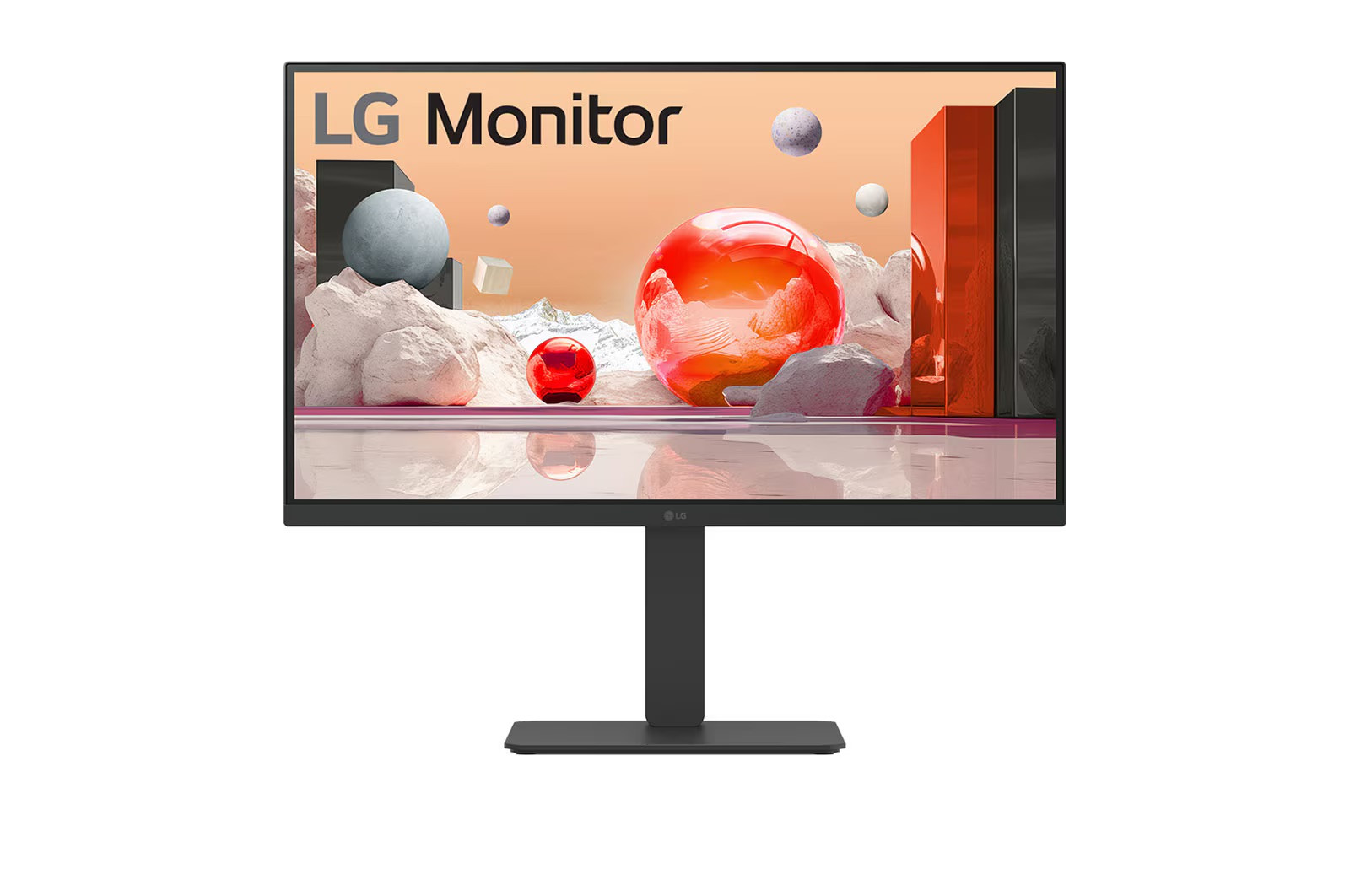







































£371.37*
- Resolution 1920 x 1080 Full HD
- Diagonal 27"
- Panel type IPS
- Refresh Rate 100Hz



Product information
The LG 27BA850-B monitor is the perfect choice for professional working environments that demand both maximum productivity and comfort. Equipped with a 27-inch Full HD IPS display, integrated webcam, microphone and speakers as well as versatile connectivity options, this monitor offers an all-round solution for the modern office.
The technical data at a glance:
- Screen size: 27" Full HD (1920x1080) IPS display, anti-glare
- Refresh rate: 100Hz
- Integrated components: Full HD webcam, microphone, speakers
- Ports: USB Type-C™ (PD 90W), RJ45 and several other interfaces
- Ergonomics: tilt, swivel, pivot and height-adjustable stand
- Comfort features: Reader Mode & Flicker Safe
- Certifications: EPEAT & Energy Star
Brilliant colour quality thanks to IPS technology
The 27-inch Full HD IPS display of the LG 27BA850-B offers impressively clear and vivid colour reproduction that is maintained even at wide viewing angles. IPS technology ensures consistent colour reproduction from almost any viewing angle, making this monitor ideal for team collaboration. Whether displaying graphics or editing documents, the colours remain precise and clear.
Perfect for virtual meetings - integrated webcam, microphone and speakers
The LG 27BA850-B is equipped with a full HD webcam, integrated microphone and speakers, making virtual meetings and video calls a breeze. This eliminates the need for additional hardware, keeping the workplace tidy and efficient. These features make the monitor an ideal solution for professional working environments where communication and collaboration take centre stage.
Maximise productivity with 100Hz and USB Type-C™
With a refresh rate of 100Hz, the monitor ensures smooth movements and a smooth display without image delays or motion blur. This not only increases working comfort, but also boosts efficiency, especially for multitasking tasks. The USB Type-C™ port enables quick and easy connection to all devices. With a power output of up to 90W, connected laptops can be charged directly via the monitor - all with just one cable.
Ergonomic design for maximum comfort
Thanks to its ergonomic design the LG 27BA850-B can be customised to suit any working environment. The monitor can be adjusted in height, tilted, swivelled and even rotated by 90 degrees to ensure an optimal viewing position. This not only facilitates use over longer periods of time, but also promotes communication with colleagues or customers.
Eye-friendly features for longer working hours
With the integrated Reader Mode and Flicker Safe technology, visual comfort is maximised even during long working hours. Reader Mode reduces blue light radiation and optimally adjusts the colour temperature for reading documents. Flicker Safe technology minimises invisible flickering, which relieves strain on the eyes and allows you to work comfortably for hours on end.
The LG 27BA850-B combines state-of-the-art technology, ergonomic design and comprehensive connectivity options in a compact and powerful monitor that is perfectly designed for the demands of the modern workplace.
Technical data
| Name | LG 27BA850-B 27" Monitor |
|---|---|
| Article number | 1000033167 |
| GTIN/EAN | 8806096207307 |
| Manufacturer SKU | 27BA850-B.AEU |
| EPREL ID | 2010438 |
| Model name | 27BA850-B |
| Brand | LG |
| Product Type | Monitor |
| Panel type | IPS |
| Resolution | 1920 x 1080 Full HD |
| Diagonal | 27" |
| Aspect Ratio | 16:9 |
| Viewing angle - Horizontal | 178° |
| Viewing angle - Vertical | 178° |
| Contrast Ratio | 1,300 :1 |
| Max. Brightness | 250 cd/m² |
| Response time | 5ms |
| Refresh Rate | 100Hz |
| Support - VESA | 100 x 100 |
| Inputs | 1x Displayport , 1x Ethernet , 1x HDMI , 1x USB-A , 1x USB-C |
| Outputs | 1x 3,5mm Jack , 1x Displayport |
| Product width | 61.17 cm |
| Product height | 36.41 cm |
| Product depth | 5.03 cm |
| Weight | 7.9 kg |
| Colour | Black |
| EEK Spectrum | A to G |
| Energy efficency class | D |
| Condition | New |
| Warranty | 36 Month |
| Warranty type | Swap service Service and support information |
Product safety
| Person responsible for the EU |
|---|
| LG Electronics Deutschland GmbH |
| Alfred-Herrhausen-Allee 3-5 |
| 65760 Eschborn |
| Germany |
| info@lge.de |



